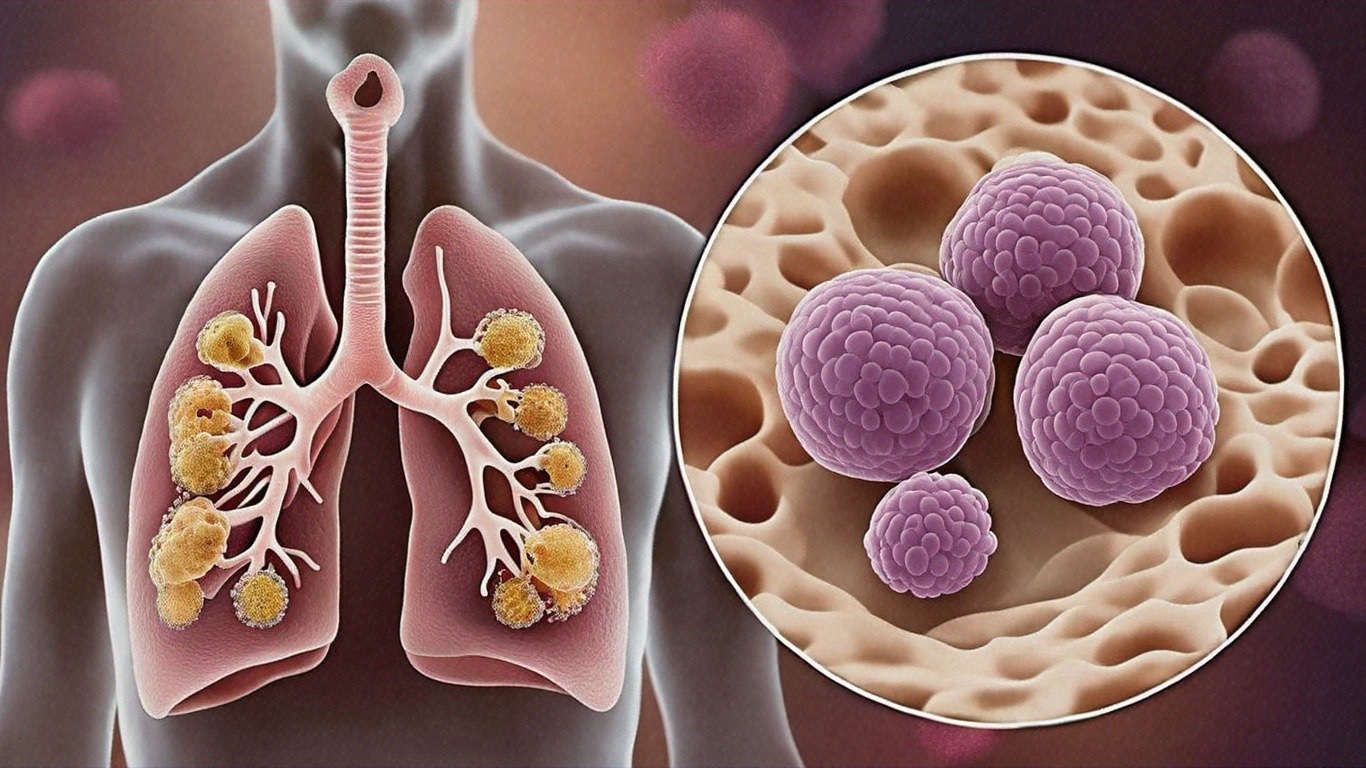Exposure alters immune cell movement and reduces pathogen clearance, increasing the risk of severe lung infections.
Study: Alveolar macrophage function is impaired following inhalation of berry e-cigarette vapor. Image Credit: Shutterstock AI / Shutterstock.com
Alveolar macrophages (AM) are innate immune cells present within alveoli that protect the lower respiratory tract against invading pathogens. A new study published in PNAS reports alterations in AM function following exposure to berry-flavored e-cigarettes, which lead to poor immune responses to pathogens and reduced host survival.
What are AMs?
The lungs consist of thin-walled air sacs called alveoli. Gas exchange occurs between alveolar air and capillaries within thin layers of interstitial tissue, which are micrometers thick.
The innate immune cell signature of the lungs includes cells that regulate the immune response to pathogens like Pseudomonas aeruginosa, which ultimately induce inflammatory cytokines to prevent destructive lung inflammation. Typically, these bacteria are detected, phagocytosed, and cleared by AMs. However, impaired AM function can lead to bacterial colonization with reactive neutrophilia, which increases the risk of serious illness and death among immunocompromised or chronically ill individuals.
To prevent pathogen invasion, AMs can extrude their cytoplasm into the narrow interalveolar pores of Kohn, where they can move around each alveolar space. This activity is dependent upon cell division control protein 42 (CDC42) activity, which mediates polymerization of the contractile protein actin involved in squeezing the large AM nucleus through constricted openings.
How does vaping affect AMS?
E-cigarettes consist of a liquid containing propylene glycol (PG) and vegetable glycerin (VG) with nicotine and other flavors. When heated, this liquid produces various aerosols that are ultimately inhaled by the user, thereby increasing their risk of exposure to harmful chemicals.
Fruit and candy flavors are often incorporated into e-cigarettes, which has led to their widespread attraction among young users, particularly those between 13 and 18 years of age. Recently, numerous adolescent vapers have rapidly developed lung injury, often within months, which is comparable to cigarette-induced damage that often arises after several years.
In the current study, researchers examined how inhaled berry-flavored e-cigarette vapor (BFEV) affects AM behavior. AM movement was monitored with PKH26, a membrane dye that stains for phagocytes.
In two cohorts, mice were exposed to BFEV daily for three or ten days. A third control cohort was exposed to room air.
Impaired AM movement with exposure
AM behavior varied significantly between BFEV-exposed mice and controls but not between the three- and ten-day exposed groups. Exposed AMs exhibited significantly lower RhoGTPase and CDC42 expression, thus indicating altered movement.
Exposed AMs traveled a smaller average distance over one hour than controls with shorter cell tracks. Fewer exposed AMs traveled over 40 μm at a lower mean speed.
AM squeezing was reduced to 9%, whereas probing behavior increased to 75%. Increased probe length was also observed, which suggests reduced interalveolar migration in exposed mice. Patrolling behavior dropped from 33% to 21% after exposure.
These observations are not attributed to decreased AM viability, apoptosis, or cytokine changes, including interleukin (IL)-1β and tumor necrosis factor-alpha (TNF-α), which would be suggestive of pyroptosis or necroptosis. Integrin-independent AM changes were observed.
Reduced pathogen clearance
Movement shifts reduced chemotaxis but not phagocytic activity, which negatively impacted AM-mediated clearance of inhaled P. aeruginosa. Rather, AMs switched to blind patrolling in response to the infection-induced increase in integrin activity.
The inability to cloak the bacteria facilitated cytokine release, inflammation, and neutrophil recruitment. Exposed infected mice lost weight and took longer to return to baseline weights, with a modest increase in mortality as compared to infected controls exposed to air or flavorless vapes.
The adverse effects of BFEV exposure on AM function were reflected in increased bronchoalveolar lavage fluid (BALF) turbidity and surfactant A post-exposure.
Lack of AM activation
Cytokine and chemokine levels in BALF did not significantly change following BFEV exposure, which reflects inactive AMs. The reduced retrieval from BALF was due to the loss of squeezing ability rather than the stickiness of activated AMs, which increases their susceptibility to being trapped in the alveoli.
AM homeostasis is affected by BFEV exposure despite a mixed anti- and pro-inflammatory profile replacing the classical switch between pro- and anti-inflammatory phenotypes.
AM cytoskeleton and actin changes
BFEV, rather than flavorless e-cigarette vapor, produced significant bidirectional changes in multiple AM proteins as compared to flavorless e-cigarette smoke. Metabolic alterations and lipid accumulation were frequently observed following all e-cigarette vapor exposures.
However, the berry flavor influenced changes in actin localization and intensity. BFEV exposure also reduced CDC42 levels, a protein that facilitates actin polymerization in the perinuclear area for cell migration.
Similar to nicotine, docking simulations identified several compounds in BFEV with an affinity for an allosteric CDC42 inhibition binding site. However, none of these compounds, including menthol, altered AM activity to the same extent as the berry-flavored vape liquid.
Certain aromatic compounds in berry-flavored vape liquid have additive inhibitory effects on each other and nicotine, thereby reducing CDC42 activity.
Integrin blockade reduced AM patrolling but did not impair deformation or altered behavior. Comparatively, all AM and BALF changes were mirrored by exposing airway AMs to a functional CDC42 inhibitor, ML 141, thus indicating the mechanism of action of BFEV.
However, BFEV, rather than ML 141, led to reduced CDC42 expression and size shift, which suggests that this effect arises due to posttranslational modification of the protein, which results in a loss of function.
CDC42 within these cells was inactive, as demonstrated by evenly dispersed cytosolic protein. This is comparable to concentrated levels of cytosolic protein in a single spot near the plasma membrane present in controls, which reflects activated CDC42.
Together this skewed immune response and increased bacterial burden led to decreased survival of animals.”
Journal reference:
- Kulle, A., Li, Z., Kwak, A., et al. (2024). Alveolar macrophage function is impaired following inhalation of berry e-cigarette vapor. PNAS. doi:10.1073/pnas.2406294121.
Source link : News-Medica

